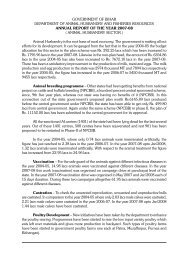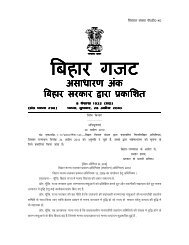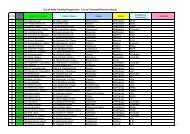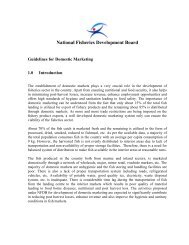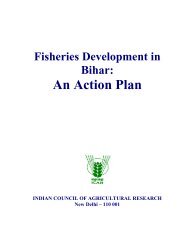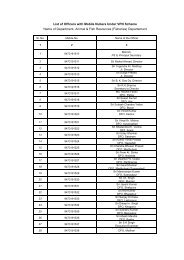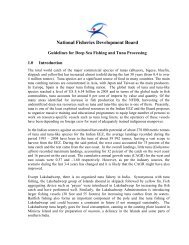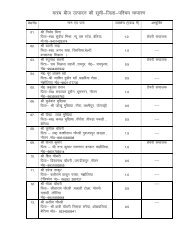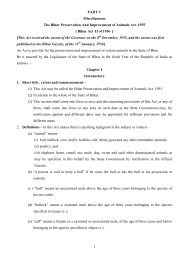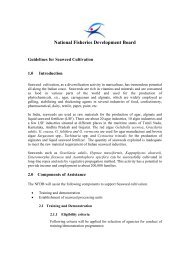GOVERNMENT OF BIHAR - Animal & Fish Resources
GOVERNMENT OF BIHAR - Animal & Fish Resources
GOVERNMENT OF BIHAR - Animal & Fish Resources
- No tags were found...
You also want an ePaper? Increase the reach of your titles
YUMPU automatically turns print PDFs into web optimized ePapers that Google loves.
<strong>Fish</strong>eries Policy 2008mainly capture fisheries is practiced, and only about 2700 ha area i.e.less than one third of available area has been brought under culturewith average productivity of 300-400 kg/ha/yr. The lakes have beensubjected to a number of stress factors like heavy infestation of aquaticweeds, siltation, encroachment, habitat degradation, etc leading toconsiderable decline in its physical expanse and aquatic biodiversity.The policy seeks to bring almost every ox bow lake into culturebased fisheries by the year 2020 and produce nearly 9000 tons of fishproduction every year. The policy encourages community participatedmanagement of the ox-bow lakes by active involvement of localfishing / farming communities. The leasing policy shall ensure long termleasing of water bodies to facilitate investment, inculcate a sense ofownership and sustainable production approach. The leasing priority,lease rent, terms and conditions are to be streamlined and subjectedto periodic review. Cluster development approach is to be adopted toensure easy and round the year availability of adequate and qualityfish seed. Comprehensive mapping and survey for proper planning,renovation and restoration of oxbow lakes to make them suitable forfish culture, regular training and technical support are some of the mostessential part of the management strategy so as to help them theinvolved local communities sustainably manage these ecologicallysignificant resources.5. Development of <strong>Fish</strong>eries in Floodplains and WetlandsThe northeast part of Bihar has a long stretch of flood plains inGandak and Kosi basins. A series of shallow lakes locally known aschaurs exist in these areas to the tune of about 46000 ha. These waterbodies support a rich biodiversity, but are biologically sensitive andfragile in nature. They are also the repositories of variety of freshwaterfood and ornamental fishes. At present, a mainly capture fishery isbeing practiced with production being as less as 40 -50 Kg8




